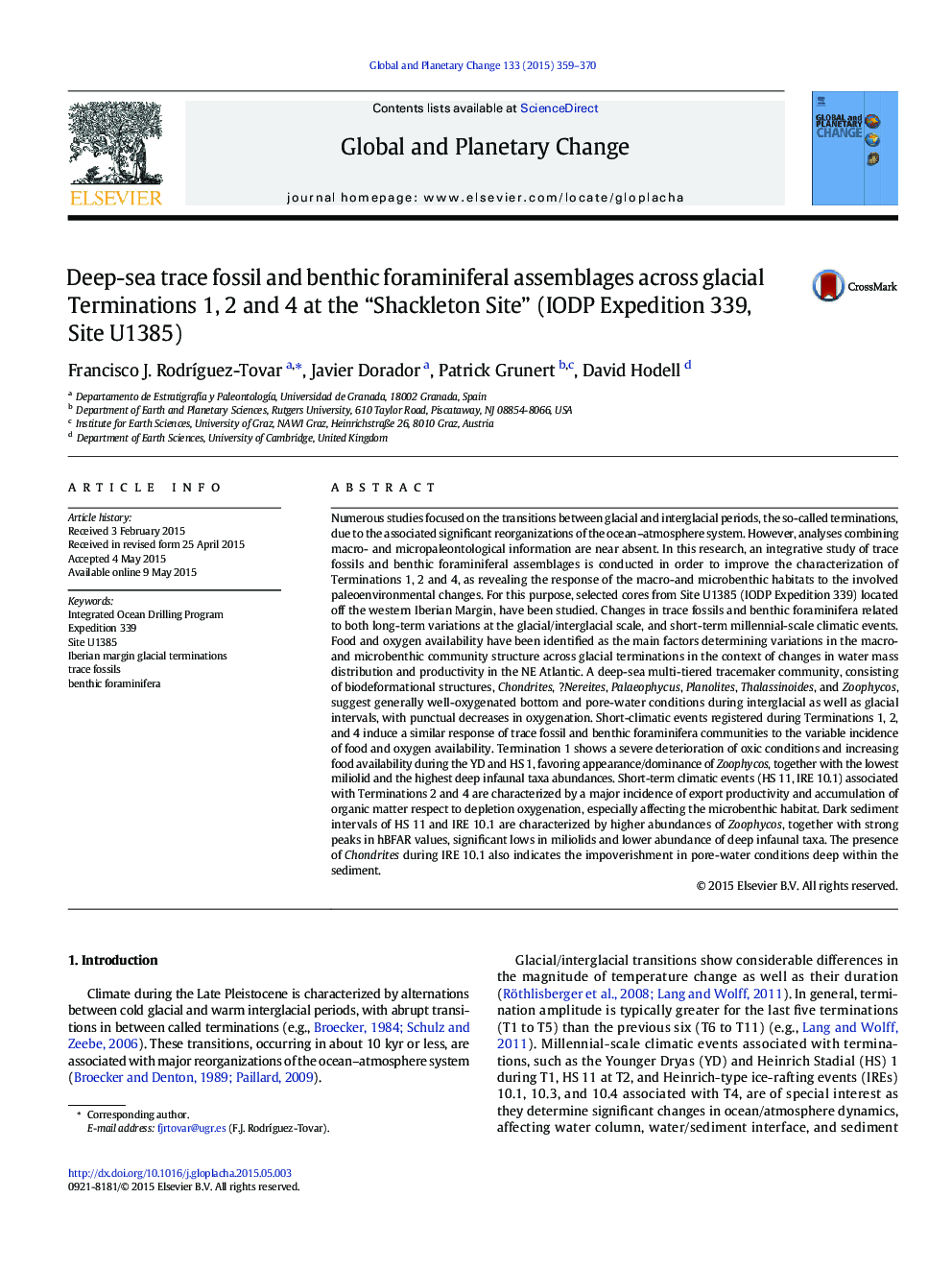| کد مقاله | کد نشریه | سال انتشار | مقاله انگلیسی | نسخه تمام متن |
|---|---|---|---|---|
| 6348090 | 1621649 | 2015 | 12 صفحه PDF | دانلود رایگان |

- Trace fossils and benthic foraminifera from Site U1385 are analyzed.
- Changes of sea-floor environment across Terminations 1, 2 and 4 are reconstructed.
- Assemblages respond to variations in oxygen and nutrient availability.
- These variations are linked to changes in water-mass distribution and productivity.
Numerous studies focused on the transitions between glacial and interglacial periods, the so-called terminations, due to the associated significant reorganizations of the ocean-atmosphere system. However, analyses combining macro- and micropaleontological information are near absent. In this research, an integrative study of trace fossils and benthic foraminiferal assemblages is conducted in order to improve the characterization of Terminations 1, 2 and 4, as revealing the response of the macro-and microbenthic habitats to the involved paleoenvironmental changes. For this purpose, selected cores from Site U1385 (IODP Expedition 339) located off the western Iberian Margin, have been studied. Changes in trace fossils and benthic foraminifera related to both long-term variations at the glacial/interglacial scale, and short-term millennial-scale climatic events. Food and oxygen availability have been identified as the main factors determining variations in the macro- and microbenthic community structure across glacial terminations in the context of changes in water mass distribution and productivity in the NE Atlantic. A deep-sea multi-tiered tracemaker community, consisting of biodeformational structures, Chondrites, ?Nereites, Palaeophycus, Planolites, Thalassinoides, and Zoophycos, suggest generally well-oxygenated bottom and pore-water conditions during interglacial as well as glacial intervals, with punctual decreases in oxygenation. Short-climatic events registered during Terminations 1, 2, and 4 induce a similar response of trace fossil and benthic foraminifera communities to the variable incidence of food and oxygen availability. Termination 1 shows a severe deterioration of oxic conditions and increasing food availability during the YD and HS 1, favoring appearance/dominance of Zoophycos, together with the lowest miliolid and the highest deep infaunal taxa abundances. Short-term climatic events (HS 11, IRE 10.1) associated with Terminations 2 and 4 are characterized by a major incidence of export productivity and accumulation of organic matter respect to depletion oxygenation, especially affecting the microbenthic habitat. Dark sediment intervals of HS 11 and IRE 10.1 are characterized by higher abundances of Zoophycos, together with strong peaks in hBFAR values, significant lows in miliolids and lower abundance of deep infaunal taxa. The presence of Chondrites during IRE 10.1 also indicates the impoverishment in pore-water conditions deep within the sediment.
Journal: Global and Planetary Change - Volume 133, October 2015, Pages 359-370